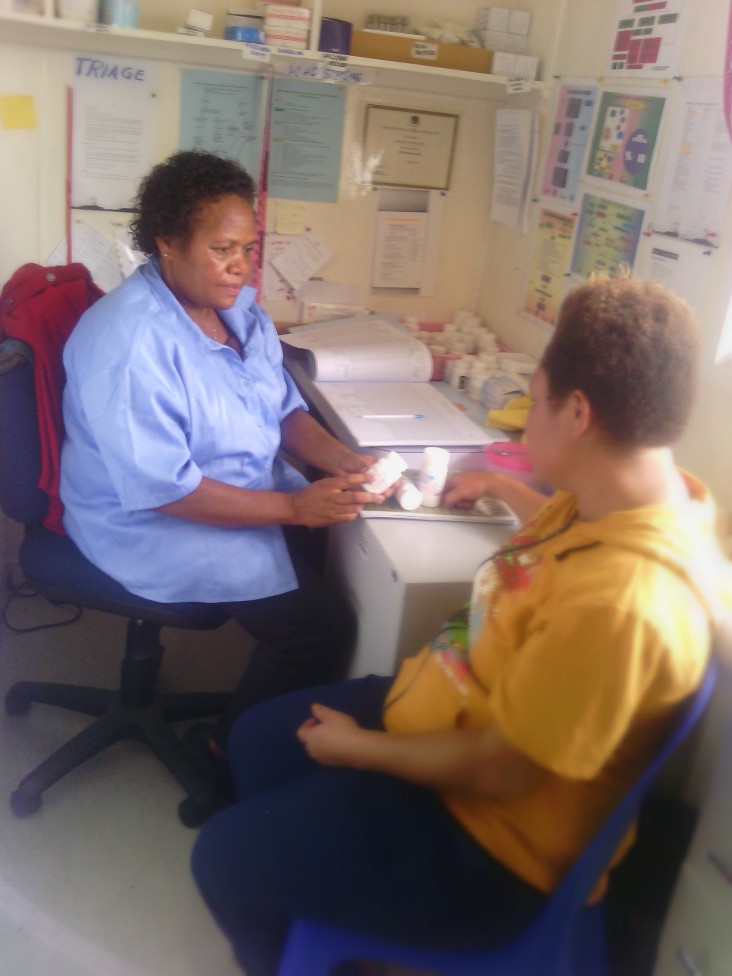
Feb. 2015—Treating patients with HIV/AIDS in Papua New Guinea is complex. Those who carry the disease also carry the burden of social stigma. By the time an infected individual finally braves a visit to a clinic, they may be very sick.
Jenny* came to the USAID-supported Kila Kila clinic in Port Moresby in July 2014. Clinic staff diagnosed her with multidrug-resistant tuberculosis, a serious strain of the disease that demands a long and debilitating medication course. As clinic doctors planned her treatment, they discovered that Jenny also had diabetes and hypertension. Final tests revealed that she was HIV-positive.
That’s when Jenny met Rose Rubin, a Kila Kila clinic nurse. Rubin was assigned to Jenny as her antiretroviral therapy nurse, to walk her through the HIV treatment plan to ensure she got the care she needed to survive.
“Jenny was a special patient to me. I am in a resource-limited clinical setting,” said Rubin. “I worked hard to ensure that she stayed alive and would see her three children grow up.”
Rubin guided Jenny’s treatment to slowly introduce the powerful medications she had to tolerate. She dedicated attentive time to Jenny by scheduling her on the clinic’s least busy days. Through Rubin’s patient-centered approach, Jenny, who was initially in denial of her HIV status, gradually formed a trusting bond with Rubin and actively pursued treatment.
Jenny now fully adheres to her medications and appointments. Although she still has a long road ahead, she looks and feels healthier than when she first visited the clinic.
USAID’s Strengthening HIV/AIDS Services for Most At-Risk Populations in Papua New Guinea project supports nearly 350 clients with antiretroviral therapy nurses. The strong and supportive approach to case management has paid off; the patient adherence rate for these USAID-supported clinics is 90 percent. The project runs from 2013 to 2017.
Papua New Guinea suffers from the highest rate of HIV/AIDS in the Pacific, with overall adult prevalence at nearly 1 percent. Data points to a more concentrated HIV epidemic linked to high-risk populations such as female sex workers and their clients, and men who have sex with men.
USAID—in collaboration with local and national governments and civil society partners—is improving the country’s ability to prevent and treat HIV/AIDS through the Continuum of Prevention to Care and Treatment model, which is being implemented across the country, and now worldwide at other USAID missions. Using this model, Papua New Guinea recently secured a grant from the Global Fund to Fight AIDS, Tuberculosis and Malaria to deliver services to high-risk groups, advancing the country’s ability to bring treatment to an even larger scale.
Through the dedicated work of partners like Rubin, USAID can envision an AIDS-free generation, where healthy, stable families are free to pursue livelihoods and contribute to prosperity in their homes and communities.
*Name changed to protect privacy.
LINKS
Follow on Facebook







Comment
Make a general inquiry or suggest an improvement.